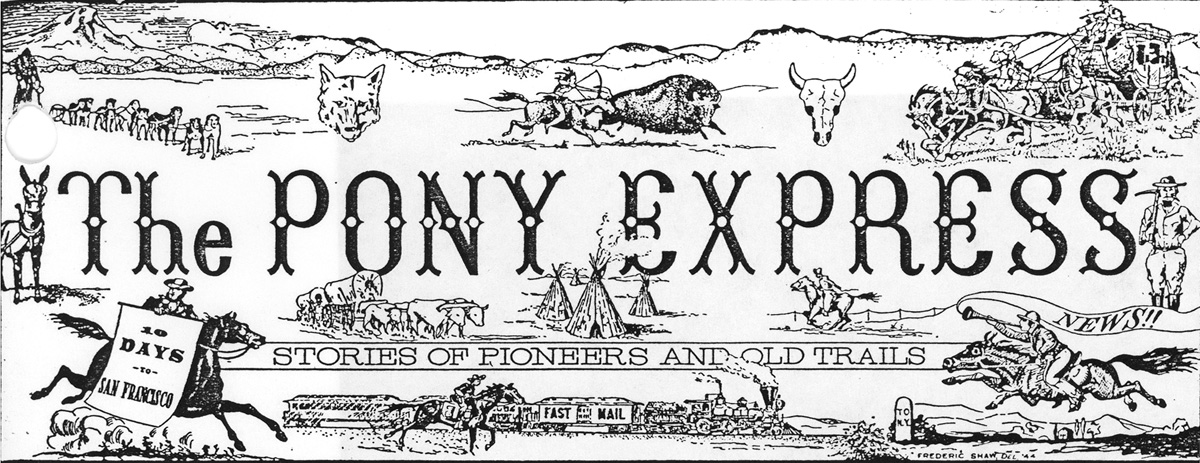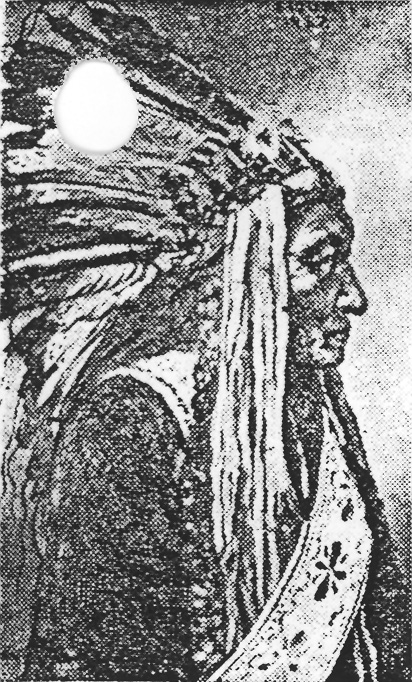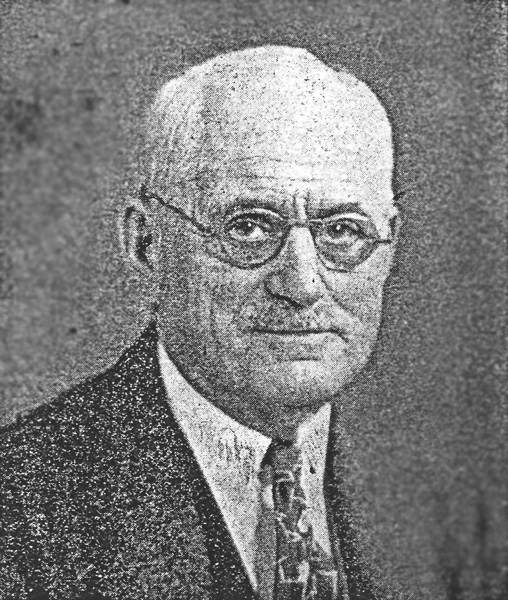
From the files of M. Melissa Wolfe


SITTING BULL
1837-1890
Great warrior of the Hunkpapa Sioux, who led forces against Custer at Battle of the Little Big Horn, June 25th, 1876, resulting in annihilation of all the 7th Cavalry, consisting of 235 whites, who were all scalped by squaws, including Captain Tom Custer, General Custers brother, whose heart was also cut out by Rain-In-the Face, who swore such vengeance, saying that he would cut it out and eat it. In 1890 the Piutes of Nevada brought their ghost shirt (Messiah-crazed) dances into the Sioux country which Sitting Bull adopted to his tribe, causing no end of trouble, and resulting in his arrest. While resisting arrest at Fort Yates he was murdered by his own men, who with soldiers in charge, precipitating fourteen days later the Massacre of Wounded Knee in which General Tony Forsyth ordered the gatling guns to mow down 300 innocent, helpless and defenseless Indians, including women and children - the worst block spot on the pages of American history. Buffalo Bill was Sitting Bulls great friend. He tried to get to him and straighten out all difficulties before the white officer in charge ordered him arrested, or shot if he resisted. Photo - from E. A. Burbanks original painting in Thomas Norris Library, Livermore, California.
------------------------------------------------
87-Year Old Indian Artist, Burbank,
Receives Letters of Appreciation
Regarding His New Book
------------------------------------------------
Daniel C. Jackling
Hobart Building
San Francisco, Calif.
July 18, 1945.
Mr. E. A. Burbank
Manx Hotel
Powell and OFarrell Streets
San Francisco, Calif.
Dear Mr. Burbank:
The prints of the late and present Presidents, referred to on your card of July 15, arrived at my Woodside home this morning. They are fine examples of your skillful art as a portraitist, and I am happy to possess them.
I have derived no end of pleasure from reading your book of Indian illustrations and lore received some time ago. In various times of the past I have become well acquainted with Indian personalities and their history, more especially regarding the territories adjacent to the Gila River in both Arizona and New Mexico. In my earlier days I lived for some time in the tribal ranges of the northern and eastern parts of the then Indian Territory. I did not write directly to thank you for this charming book not knowing your address, but I did write to Mr. Hamlin asking him to pass along to you some of my words of appreciation for your courtesy, not only that of allowing me to have a copy of your interesting book, but for several other prints and sketches of yours which Mr. Hamlin has given to me from time to time.
With some reluctance, I adhere to your limitation of price for the Presidential portraits by enclosing herewith the amount. I would have preferred to compensate you more adequately.
With repeated thanks and all good wishes, and hoping that I may have the pleasure of meeting you in person some time, I am,
Very sincerely yours,
D. C. JACKLING
------------------------------------------------
1508 Menlo Ave.,
Los Angeles, Calif.
June 30, 1946.
Mr. E. A. Burbank
Manx Hotel
San Francisco
Dear Elbridge:
Your book was received yesterday - thank you so much for it - I appreciate your sending it and know I shall enjoy it always.
Your card came today, but do not send the pictures of Roosevelt or Truman. I think Truman has made a good start and I hope he continues to do as well. He took over a terrible mess of Roosevelts making and he has my sympathy and good wishes as well, and will need them. However, I am no Truman admirer and do not care for his picture.
I have no use for Roosevelt dead or alive but he did give promise of making a good President for the first six months of his first administration. So you see, feeling as I do, I do not want his picture.
Thank you again for the book and my best wishes for your health and happiness.
Sincerely yours,
Stella Baxter
(Mr. Burbank says: Stella is a frontier lady who worked with the Crow Indians at Custer, Montana, where her husband was a doctor and she raised her family. She is a brilliant, well-educated woman.)

Photo - from original in Pony Express Museum
E. A. BURBANK,
NOTED INDIAN PAINTER
It was in Oklahoma where he first started painting American Indians. Commissioned by Edward E. Ayer of the Marshal Field Museum, Burbank was sent to Fort Sill in 1897 to make his first portrait of the great outlaw, Geronimo. Burbank said that he found the Apache Chief a very peaceful, law-abiding citizen. He won his friendship and made seven paintings of the old battle-scarred warrior, also of Chief Naiche, and the beautiful Kiowa Indian maiden - GI-AUM-E. At Darlington, Oklahoma, he painted Chief Black Coyote of the Arapahoes, and also some Comanches. Several times he returned to the Boomer State, and today, in his 88th year, his fondest recollections are of the days within its borders. The oil fields at Burbank were discovered near the town named after him. Not far away is the town of Remington, named after his contemporary, Frederic Remington, who was also an early resident and painter of Oklahomas wild life.